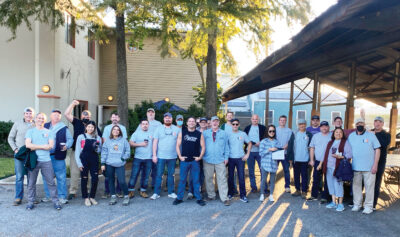When asked about the health of their markets, Hardwood lumber providers on the West Coast gave positive assessments but with some reservations – for different reasons.
“It’s good,” said a lumberman in Washington about his market. “It’s a little softer than it was three months ago. I think there was a frenzy of buying when some items were scarce, and I believe a lot of people are stocked up right now.”
His market has changed from earlier this year. “Back then, if you had product, to a point, price didn’t matter. It was all about availability. Now there’s a lot more lumber out there. It’s a little more competitive pricewise,” he stated.
He handles all basic Eastern Hardwoods, he said, including Oaks, Hard and Soft Maple, Hickory, Cottonwood and Alder. Selling best is Hard Maple.
He sells his lumber to distribution yards and end users. Asked about their sales to their customers, he said, “I haven’t heard of anybody who’s had a drastic slowdown at all.”
Regarding transportation, there’s good news and bad news, he said. “It seems like freight costs went down slightly, but it’s still tough to land trucks. It’s the availability that is a problem.”
To the south, in Oregon and California, the strong markets are weakened somewhat by scarcity of product.
In Oregon, a lumber provider said his company is continuing to do business at the same pace and not slowing down. “The difficult part is supply,” he stated. “Our challenge is being able to buy in enough quantity to satisfy all our customers. It’s very difficult. What we sell is hard to replace. There are rolling shortages.
“I do see some easing with some lumber manufacturers so that we can get more lumber to sell. We’ve seen greater availability of flooring. But, it’s still not where it needs to be.”
Compared to a few months ago, he noted, doing business is “more frustrating. We deal with a lot of Hardwood plywood. You have to beg to get some product. And prices continue to go up and availability goes down.”
He sells all domestic and import species of Hardwood. “The problem with imports is ocean shipping,” he pointed out. “When you import, the ships will no longer come into Seattle or Portland. So, the product goes to Los Angeles or Long Beach, which adds to the cost. And the cost of containers has risen.
“We primarily sell to end users who manufacture cabinets, store fixtures and displays,” he stated. “We sell to some large retailers. Also, we sell Hardwood floors and we have a millwork facility.”
What problems does his company face? “Logistics is a problem,” he said. “Getting containers to the port is difficult, and it’s terrible getting containers released from the port and delivered. There is a shortage of labor in the railyards. There’s a huge competition for truckers,” he added.
Labor also is a significant problem, he stated. “Most of our mills would put on another shift, but they just couldn’t staff it. I thought that we would see some changes once the federal assistance bill dropped, but we just haven’t seen it. And you’ve got to go out and compete for employees with FedEx, UPS and Amazon – all at $19-plus an hour.”
A California lumberman stated, “The market is still pretty strong. But I would say customers and lumber companies are still having a hard time getting some product they need. From the sawmills, it’s an ongoing battle to get product. First of all, they don’t have the labor they need. Second, softwood lumber takes two days to kiln-dry and Hardwood lumber takes 30 days. That’s a substantial difference right there.
“Also, some loggers will take off in their trucks and go down to the hurricane areas and work there. That leaves some mills short of guys to haul logs to the mill. That’s part of the problem, too. Guys will have logs cut, and they can’t get them to their sawmill. They’re hurting for truckers to bring the logs to them.”
Looking back a few months, he said his market is the same as it was then. “It’s still a good market,” he said. “You just have to have lumber to sell.” The lumber he sells is Walnut, White Oak and Hickory in FAS, No. 1 Common and No. 2 Common. White Oak is selling best.
His customers are distribution yards and flooring companies. How is their business? “They’ve been solid,” he noted. “They have a lot of back orders. The remodeling market is helping them, too.”
For him to move his product is not a problem. “There’s just a lot of trucks in Southern California,” he observed. “That really makes a difference.”









